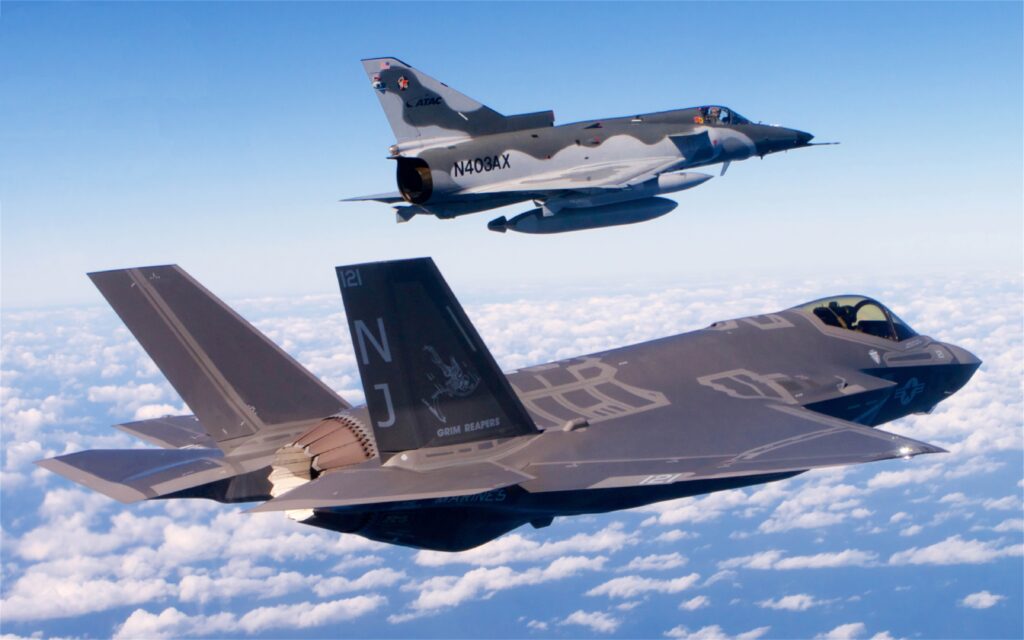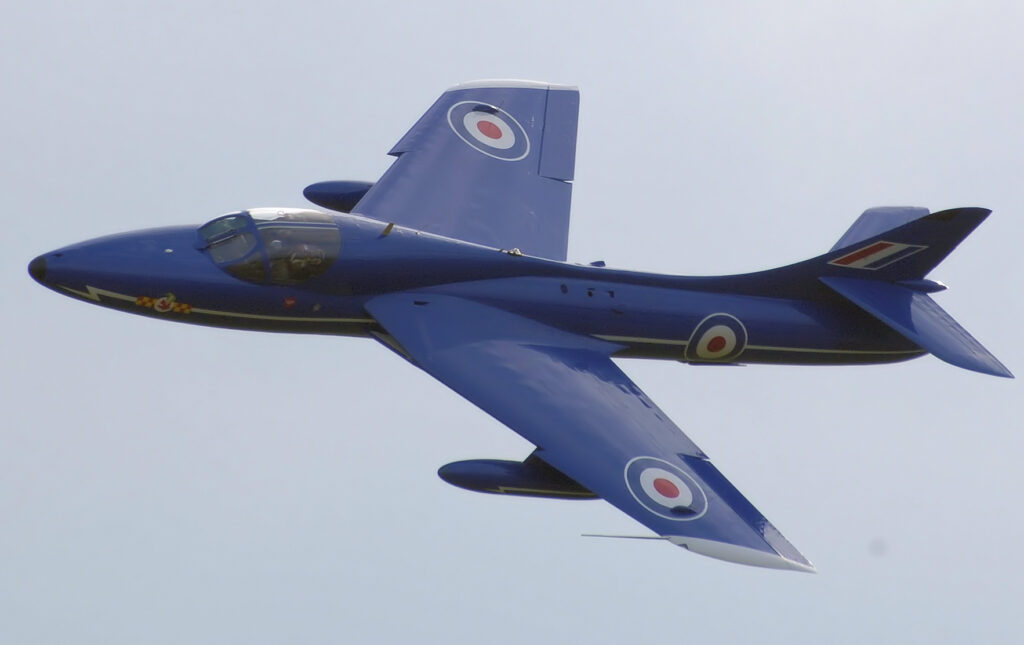Have Jet, Will Travel: Training F-35s Vs. 1950s Fighters
Posted on

An F-35 (foreground) trains with an ATAC privately owned F-21 Kfir (background).
The Air Force has too few pilots. The Navy has too few planes. Textron has a solution: outsource to us.
No, the defense contractor isn’t proposing privatized air wars. It’s suggesting that military training make greater use of privately owned aircraft as the “enemy” in mock dogfights. The leader in this field, at least in the US, is the Airborne Tactical Advantage Company (ATAC), recently acquired by Textron after 20 years in business.
ATAC aircraft fly about 6,000 hours a year on their current training contracts for the Navy and Air Force, but Textron confidently expects the demand “will double…in 2018,” said Russ Bartlett, a retired Navy pilot and CEO of the newly created Textron Airborne Solutions unit which includes ATAC. What’s driving this demand? In the Cold War, both services operated large “aggressor squadrons” with their own personnel flying non-standard aircraft to play the part of bad guys in training exercises, but since 1991 that in-house capability has been cut back sharply, forcing the military to outsource. While some military aggressor squadrons remain, their aircraft are aging with no clear plan for replacements.
ATAC argues it’s not just an inferior substitute for in-house aggressors. Using ex-military pilots as the adversary frees up serving US pilots to practice being, well, US pilots instead of emulating enemy tactics. Using relatively cheap second-hand aircraft saves the military both money and wear-and-tear on its own sophisticated, expensive-to-operate airplanes.

Hawker Hunter
ATAC has about 30 pilots: all ex-military, half of them former squadron or wing commanders, and exactly one of them (just hired) a woman. They fly a fleet of 26 aircraft: six supersonic Israeli Kfirs; 16 subsonic British Hawker Hunters; and four Czech L-39 Albatros trainers. The Czech planes are used only for ground-attack training, not dogfights. The Israeli Kfirs were built in the 1980s to a 1970s design, and they form ATAC’s high-end, high-speed attack force. The Hawker Hunters are the workhorses — and they’re old: ATAC’s aircraft were built in the early 1970s, at the very end of the production run, but the design first flew in 1951.
Surely US pilots need more advanced adversaries to train against? Not all the time, not for every mission, ATAC and Textron counter, so why pay for high-end airplanes when you don’t need them?
“If we went out and bought Su-30s — which we could, by the way; we’ve been offered those — our value proposition would melt,” said Jeffrey “J.D.” Parker, the Air Force veteran who co-founded and still runs ATAC. For example, he said, the company keeps its 26 old aircraft flying with just 60 maintainers (mostly former military), a fraction of what’s required to maintain modern aircraft with their elaborate electronics. (That said, ATAC flies “95 percent” of its training missions with some electronic warfare gear aboard). In any case, Parker told reporters today, “it’s not always the most complex equipment that provides the most bang for the buck.”
That’s particularly true in training for fifth generation aircraft like the F-22 and F-35, he said, whose stealth and sensors mean they usually spot and shoot down even the latest non-stealthy aircraft before they’re even seen. “F-16s aren’t even going to see the F-35, it’s stealthy,” Parker said. Based on his own conversations with non-stealth pilots who’ve gone up against stealth fighters, he said, “It’s not a lot of fun.”
What F-22s and F-35s pilots need in training is not high-quality adversaries but high quantity, Parker argued. “5th generation aircraft have a generous appetite for adversaries, they need a lot of bad guys to challenge them…limited only by the number of missiles they can carry,” he said. It’s much more affordable to put a half-dozen Hawker Hunters in the air at once than six F-16s or F-18s.
In the longer term, Bartlett and Parker do see a need to acquire more advanced aircraft. That’s a challenge, given the often Byzantine process regulating international arms sales, Bartlett said. “The next generation of aircraft that bring new capabilities to show the Air Force or Navy (must be) radar-equipped, supersonic, highly maneuverable,” he said. Textron’s independently developed Scorpion fighter might be a candidate, he said when reporters pressed, but it’d have to be carefully evaluated. ATAC’s highly successful model, he said, is “used foreign fighters for pennies on the dollar.”
Subscribe to our newsletter
Promotions, new products and sales. Directly to your inbox.
